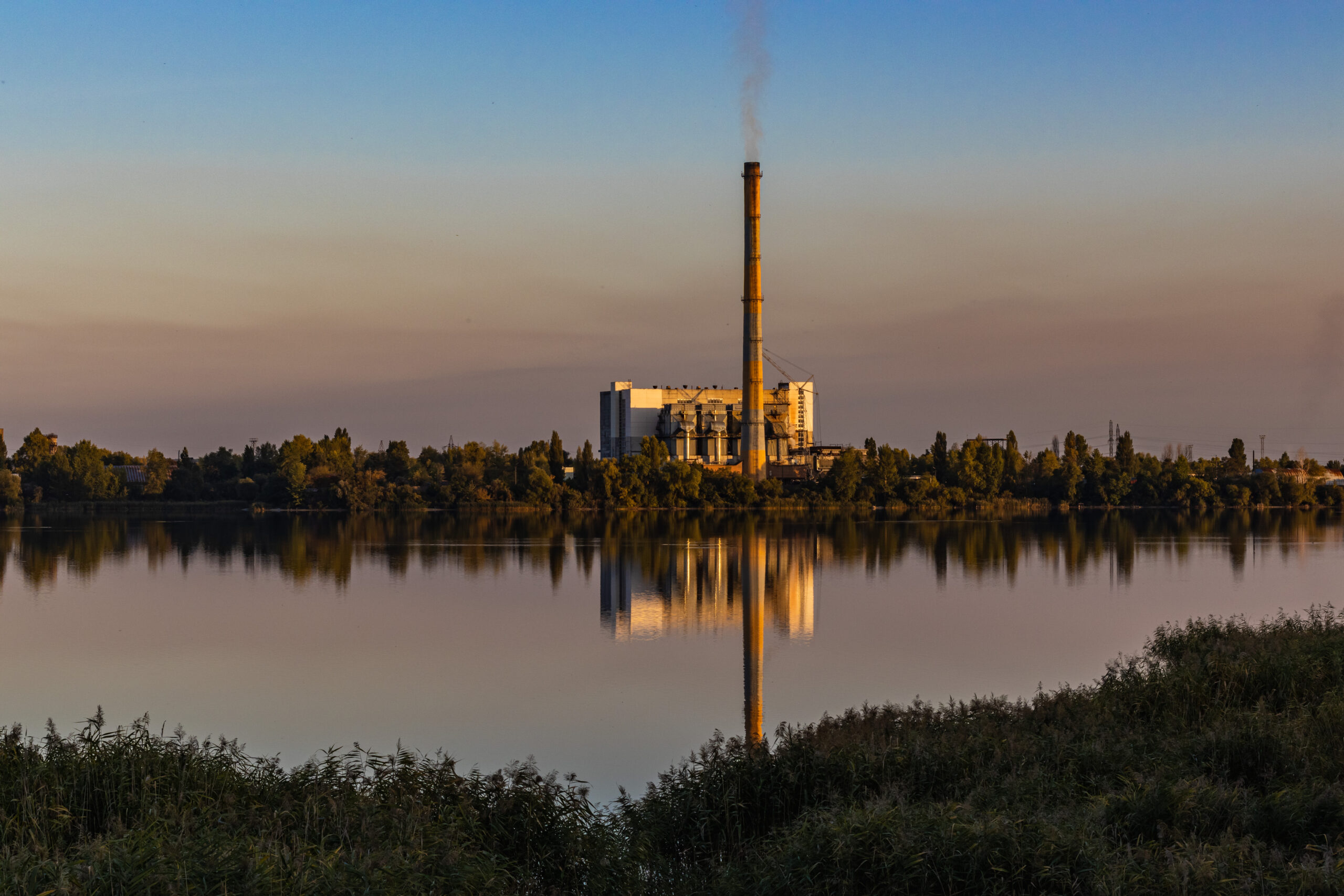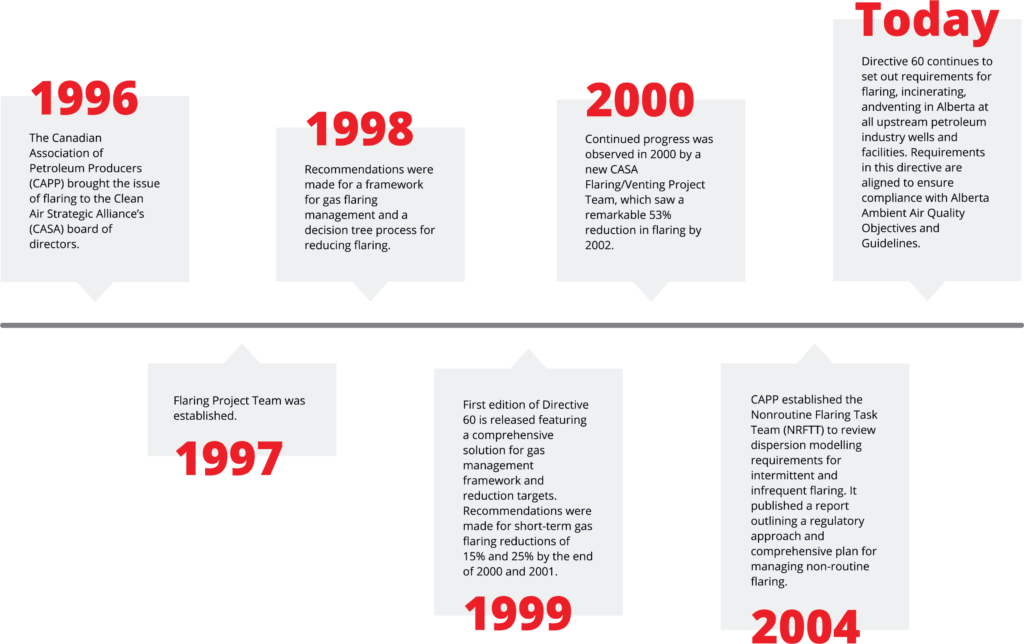Alberta Energy Regulator’s (AER) Directive 60 provides regulations regarding the upstream petroleum industry’s flaring, incinerating, and venting needs.
Backed by research from Alberta Research Council and supported by precursor organizations EUB and Alberta Environment, Directive 60 emerged due to concerns about inefficient flare stacks leaving waste gas byproducts in the air.
Through extensive consultations with stakeholders, the public, and government sectors, the EUB reviewed existing policies on using (conserving) associated gas rather than flaring it. The Canadian Association of Petroleum Producers (CAPP) brought the issue of flaring to the Clean Air Strategic Alliance’s (CASA) board of directors in November 1996, establishing the Flaring Project Team in February 1997.
In its final report in 1998, the team recommended a framework for gas flaring management and a decision tree process for reducing flaring.
Their recommendations paved the way for the first edition of Directive 60 in 1999, featuring a comprehensive solution gas management framework and reduction targets. It recommended short-term gas flaring reductions of 15% and 25% by the end of 2000 and 2001. It also defined the maximum limits on the total volume of solution gas that could be flared at individual sites if these targets were not met.
Continued progress was observed in 2000 by a new CASA Flaring/Venting Project team which saw a remarkable 53% reduction in flaring by 2002. Building on this success, the 2006 version of Directive 60 expanded to cover solution gas venting, well test flaring, and facility flaring.
Additionally, in 2004, CAPP established the Nonroutine Flaring Task Team (NRFTT) to review dispersion modeling requirements for intermittent and infrequent flaring. It published a report outlining a regulatory approach and comprehensive plan for managing non-routine flaring.
When installing a flare, combustor, or incinerator system, there are certain licensing requirements that need to be met. This includes setbacks from other areas at the facility or equipment, heights of equipment, gas measurements and various reporting. Dependent on the size and use of the appliance, Profire products including our burner management systems can fulfill specific automatic ignition or pilot burner requirements.
The AER supports ongoing research for further reducing flaring, incineration, and venting, the result of which will continue to be part of future editions of Directive 60.
To learn more about our products and solutions for reducing flaring emissions please contact us.

